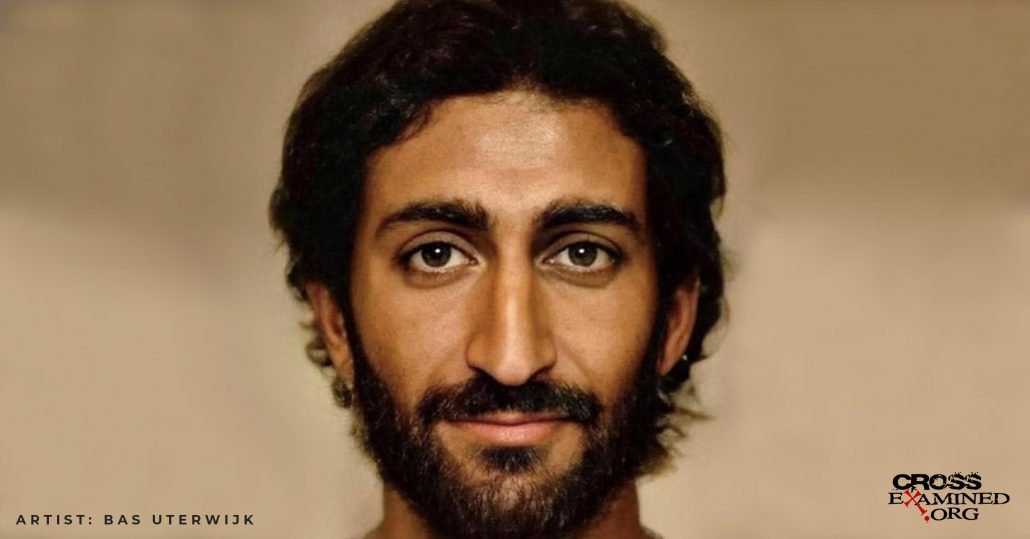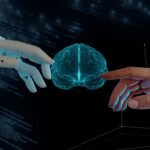By Ry Leasure
If you’ve read through the gospels, you’ve probably noticed that they share much in common. In some places, the wording is exactly the same. In other places, they’re so different it looks like they might contradict. These similarities and differences are often dubbed the synoptic problem. The word synoptic means “to see together.” The synoptic problem has led scholars to ask, why are there similarities in the gospels? And also, why are there differences?

The prevailing theory amongst scholars is that the similarities in the synoptic gospels (Matthew, Mark, and Luke) can be explained by the authors’ use of the same sources. Most believe Mark wrote his gospel first, and that both Matthew and Luke used Mark to compile their gospels. They’ve reached this conclusion because roughly 90% of Mark is found in Matthew, and about 60% is contained in Luke. Additionally, both Matthew and Luke shared another common source known as a “Q” – taken from the German word Quelle, meaning “source.” This sayings source explains Matthew and Luke’s common material not found in Mark. And then, both Matthew and Luke had their separate individual sources – sometimes referred to as M and L – which explains their own unique material. Luke’s prologue gives us a bit of a sneak peek into this process (Lk. 1:1-4).
In sum, these different sources explain both the similarities as well as the differences. Some, however, have tripped up over the differences. In fact, many go so far as to suggest that the gospels contradict one another. One such example is found in Jesus’ genealogies, to which we now turn our attention.
Jesus’ Genealogies
Only Matthew and Luke contain Jesus’ genealogy. And one side-by-side comparison reveals that the genealogies are radically different. So much so, that skeptics believe they’re irreconcilable. I’ve listed the genealogies from Matthew 1:1-18 and Luke 3:23-38 below for your convenience. Take a quick look at them so you can better understand the skeptic’s complaint:

At first glance, one glaring difference exists – Luke’s genealogy is much longer than Matthew’s. The reason? Luke traces Jesus’ genealogy all the way back to Adam while Matthew stops at Abraham. In both genealogies, the line from Abraham to David is roughly the same. But once we move past David, the genealogies diverge. Matthew traces Jesus’ genealogy through David’s son Solomon, while Luke traces the line through David’s son Nathan. Also, notice that Joseph has a different father in each account – Jacob in Matthew, Heli in Luke. How can we reconcile these differences? Lest we be tempted to think this is anything new, the church has dealt with this issue for almost two thousand years. And throughout that time, three different explanations have been given to explain the differences.
Option 1: Joseph vs. Mary’s Genealogy
One of the more popular explanations for the differences is to suggest that Matthew traces Joseph’s genealogy while Luke traces Mary’s. If this is true, the difference in genealogies makes sense. Think about your own genealogy for a moment. If you were to trace your father’s line and your mother’s line, you would get radically different family trees. Your father’s father and your mother’s father have different names. In Jesus’ case, his father’s father is Jacob while his mother’s father is Heli.
The reason some take this approach is because Matthew focuses his attention on Joseph in the birth narratives while Luke focuses more on Mary. In Luke, he describes Gabriel’s conversation with Mary, Mary’s Magnificat, and Mary’s visit to her cousin Elizabeth. Moreover, even though Luke doesn’t mention Mary in the genealogy, he couches Jesus’ sonship to Joseph by saying “as it was supposed” (Lk. 3:23). Each of these clues indicates that Luke didn’t intend to give us Joseph’s ancestry but Mary’s.
Option 2: Royal vs. Biological Genealogy
Another explanation for the differences is that Matthew traces Jesus’ royal line with an emphasis on his Messianic claim to the throne while Luke traces Jesus’ biological line. According to this view, Matthew gives us several clues to suggest that he’s giving us a theological genealogy with an emphasis on King David, not a strict biological line.
For starters, Matthew begins the genealogy by stating, “The book of the genealogy of Jesus Christ, the son of David, the son of Abraham” (Mt. 1:1). It’s well-known that Matthew writes to a primarily Jewish-Christian audience who would have understood the expectation that the Messiah would come through the line of David (2 Sam. 7:12-16; Isa. 9:6-7; 11:1-5; Jer. 23:5-6). Therefore, from the outset, he tips off his readers to where he’s going with this genealogy.
Second, the mention of “Christ” alongside the name of Jesus in verse 1 also indicates Matthew’s intentions. While many may think of “Christ” as Jesus’ last name, it’s actually a title. It’s the Greek title for the Messiah. So, when Matthew prefaces his genealogy by stating that it’s the genealogy of Jesus Christ, he’s giving further evidence to his readers that his intention is to demonstrate that Jesus comes in the kingly line of David.
A third indicator that Matthew isn’t giving us a biological line but a royal one is his breakdown of the genealogy into groups of fourteen. In verse 17 we read, “So all the generations from Abraham to David were fourteen generations, and from David to the deportation to Babylon fourteen generations, and from the deportation to Babylon to the Christ fourteen generations.”
A couple of points are worth noting here. Biblical scholars agree that the refrain “father of” or “son of” in genealogies don’t necessarily mean one generation after the next. Often times, genealogies will skip several generations. The language simply means that one is the ancestor of the next person in the line. Another point worth noting is the significance of the number fourteen and the Hebrew concept of Gematria. Gematria was the practice of ascribing a numerical number to a Hebrew letter – the first letter of the Hebrew alphabet (Aleph) has the numeral value of one and so on. Interestingly, the numerical value of David is fourteen. D(4) V(6) D(4) – 4 + 6 + 4 = 14.
It’s as if Matthew has a giant neon sign flashing “Son of David!” Luke doesn’t use any of these literary devices. He simply records the biological line of Jesus. And while Americans may be unfamiliar with the concept of royal lines, our British friends know that the line doesn’t always pass down neatly from father to son. In fact, the current queen of England inherited the throne from her father who inherited it from his brother. And the next king will probably be the queen’s grandson. All that to say, the royal line often diverges from the biological line.
Option 3: Levirate Marriage
A third explanation for the differences is the use of Levirate marriage. Levirate marriage is detailed in Deuteronomy 25:5-10 and states that if a married man dies without a male heir, his brother or closest relative must marry and seek to propagate with the widow in order to carry on the name of his deceased brother. This practice explains the Sadducees’ question to Jesus about which man would be a woman’s husband in heaven after going through seven brothers who all died (Mt. 22:24-28).
On this theory, something like the following scenario plays out: Jacob (Joseph’s father in Matthew’s genealogy) died before producing a male heir with his wife. Then, in order to fulfill the Levirate laws, Heli (a close relative of Jacob’s), marries Jacob’s widow and then conceives with his new wife which brings about Joseph. If this type of scenario played out, Joseph would be the legal son of Jacob and the biological son of Heli. Then Matthew traces Jacob’s line backwards to Abraham while Luke traces Heli’s line back to Adam. Scholars have listed several of these scenarios where something like this happened.
What’s the Best Explanation?
As I consider the three options, one of the options seems the least tenable. And that is option 1. While many have employed this option to explain the differences, Luke specifically states Joseph as the next person in Jesus’ genealogy, not Mary. He couches this relationship by stating “as it was supposed” because of his knowledge of the virgin birth. More than that, ancient Jewish genealogies always passed through the male’s line, not the female’s. Luke would have understood Jesus as Joseph’s adopted son.
This leaves options 2 and 3 as viable explanations, and my personal opinion is that a combination of the two best explains the differences in genealogies. Matthew clearly isn’t trying to give us a strict chronology with how he groups the names into lists of fourteen. Moreover, by tracing the line through king Solomon instead of Nathan like Luke, Matthew seeks to emphasize the royal nature of Jesus’ line. The levirate marriages could also help explain why different names exist in the genealogy as well.
In the end, we can’t be entirely certain which option is right. But one thing is for certain: we have viable explanations for why the genealogies are different in Matthew and Luke.
Recommended resources related to the topic:
The New Testament: Too Embarrassing to Be False by Frank Turek (DVD, Mp3, and Mp4)
Why We Know the New Testament Writers Told the Truth by Frank Turek (DVD, Mp3 and Mp4)
Ryan Leasure holds a Master of Arts from Furman University and a Masters of Divinity from the Southern Baptist Theological Seminary. Currently, he’s a Doctor of Ministry candidate at the Southern Baptist Theological Seminary. He also serves as a pastor at Grace Bible Church in Moore, SC.


















Facebook Comments